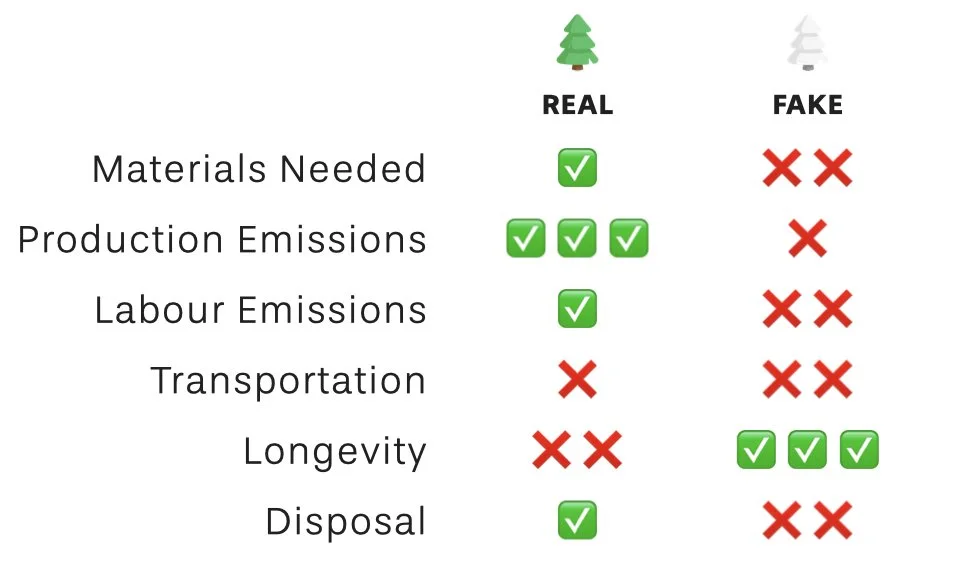Lesson Sixty: Real vs Fake Trees
Every holiday season, the debate between real trees vs fake trees surfaces up - and for good reason. 🎄
Between balancing cost, convenience, tradition, and aesthetic, there is a lot to consider. However one factor that isn’t so widely talked about is the environmental impact.
In today’s lesson, we’re going to look at the specific impacts of both real trees and fake trees. We’ll break it down by covering:
1️⃣ Why is there a debate?
2️⃣ What factors do we need to consider?
3️⃣ Understanding the impacts of real trees and fake trees.
4️⃣ What actually IS better and what can you do if that doesn’t fit your life.
*Note this is my own “rating” based on the interpretation of data I have read. Keep on swiping for more details.
REAL TREES PROS AND CONS
PROS
They capture carbon
They can be composted or mulched
Typically when a real tree is harvested in the fall, 1-3 seedlings are planted in the spring
They provide wildlife habitat
They stabilize and protect soil / watercourses
CONS
It takes around 10 years to grow a 5-6 ft tree
Tree “crops” are known to rely on toxic pesticide use
Tree farms can be from other provinces, requiring transportation
Large tree farms can displace biodiverse natural ecosystems (eg. monocrops)
FAKE TREES PROS AND CONS
PROS
Fake trees can last for multiple seasons (typically 7-10 years)
There is the option for them to be donated/sold after
CONS
They are made from some of the worst petroleum-based materials (polyvinyl chloride aka PVC)
A majority of fake trees are made in the Global East, leading to higher emissions from lower enviro standards and transportation
They cannot be recycled and end up in landfills where they will sit for hundreds of years
WHAT IS BETTER?
Before we dive into the answer, I want to point out that the real culprit isn’t getting the “wrong kind of tree”.
The true culprit is the massive amounts of over-consumption tied to the holiday season. Between the food, gifts, deliveries, driving or flying to visit loved ones - your tree really is a drop in the bucket.
However, because I truly believe every action matters, let’s continue on 👇
REAL TREES: Winner! 🎉
If you get a real tree from a local, sustainable farm and dispose of it properly afterwards, that is the most planet-friendly option.
However, if that’s not an option for you, keep swiping to see what else you can do.
Either due to cost, convenience, or other factors, real trees might not be an option for you. Here is what you can do if you prefer a fake tree:
If you’re looking for a new fake tree, check for a second hand one first.
If you already have one try to keep it as long as possible (10+ years).
If something breaks on your tree fix it instead of replacing it.
Try to donate/sell your fake tree once you’re done with it to give it a second life.
I had a lot of fun putting this together and I hope you enjoy! Much eco love and happy holidays, Annie 🌱





